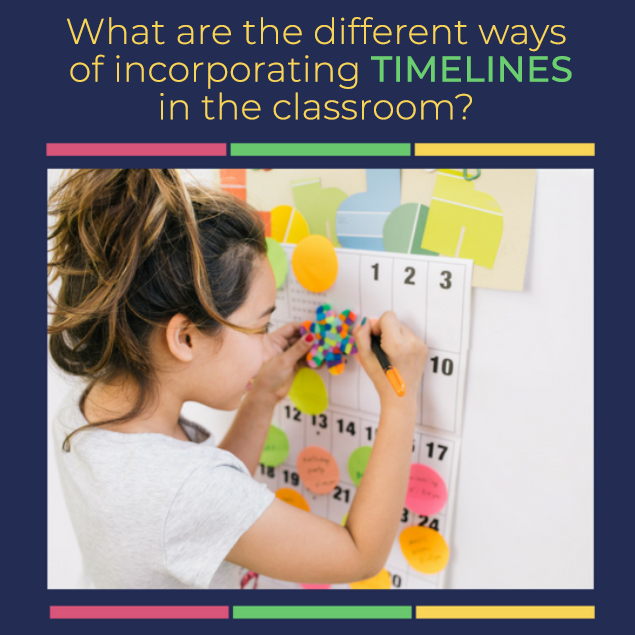3 Creative Applications of Timelines in the Classroom
Posted by Network Support · Leave a Comment
3 Creative Applications of Timelines in the Classroom
The most obvious application of timelines is to teach historical facts and dates. The linear presentation of information is clear and easy for students to follow and learn. Modernization has broadened the scope of this visual tool, and here are some ideas for how to use them in the classroom:
Classroom Timelines: Teachers and students can collaborate and make the following timelines for the classroom:
- Special day timeline: Remembering birthdays and special days is easier with a timeline, made with students’ photos and dates of birth.
- Class schedule timeline: A timeline with class work and submission dates can be displayed on the class bulletin board to help students complete and submit classwork on time.
- Writing process timeline: Students can refer to this timeline when they have a writing assignment. For instance, the timeline can mention the stages of the writing process (research, first draft, review, final draft, submission) and the time allotted for each stage.
Timeline Assignments: Encourage students to research and prepare assignments in a timeline format using online tools such as SmartDraw and Timeline JS. These assignments can also be given as group work to encourage student collaboration and partnership in learning.
Timeline Activities: Teachers can use timelines as closure activities or formative assessment tools to check for student understanding and learning. Some examples of these activities are:
- Clothesline Timeline: Tie a string across your classroom and using clothespins pin up key dates or events on the string. Create cards that have information related to the dates and events. Cold call students to pick a card and place it under the correct date or event, or specify the date and instruct students to pin any corresponding cards onto the main cards using clothespins.
- Jigsaw Timelines: Each student group is given a puzzle with events, sequential information, or dates, which are sub-components of a larger topic. Students are given 2-3 minutes to solve and arrange the puzzle, and another 5 minutes to create a timeline using the information given to them. Groups are instructed to present their timeline to their peers. After every group has presented their timeline, the class can collectively combine their puzzle to form the main topic. This main timeline can be drawn on the blackboard or smartboard.
- Storyboard Timelines: Encourage students to learn literature using timelines. Key events can be presented through a small summary and an illustration and these cards can be strung up in order to form a timeline. The activity can be given as group work and each group can present their storyboard to the class.
- Fill-in-the-Blank Timeline: Students are instructed to fill in missing information on this timeline, either the dates or the information related to it. The fill-in-the-blank template of timeline is a quick and easy evaluation of student learning.
Although predominantly a visual tool, the timeline can be incorporated in the classroom in various ways. Timelines are useful for teaching, learning, and assessing, and can be used to encourage student participation, collaboration and active learning in the classroom.
Like this article for teachers?
Browse the Professional Learning Board COURSE CATALOG to find related online courses for teachers in your state. Professional Learning Board is a leading provider of online professional development classes that teachers use to renew a teaching license or renew a teaching certificate.





